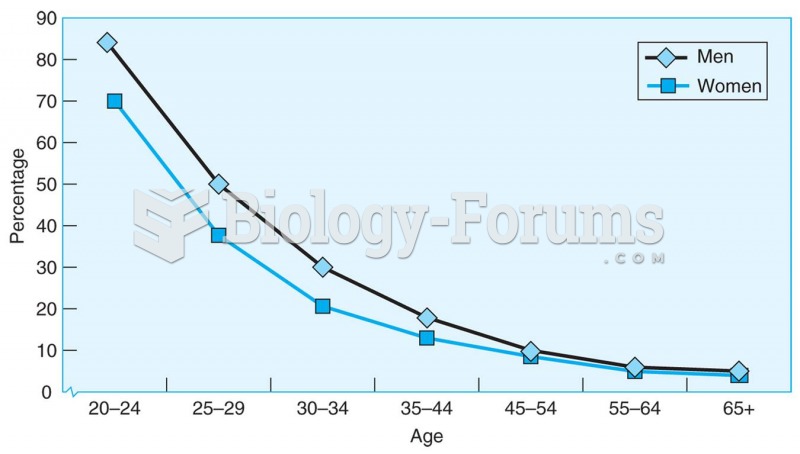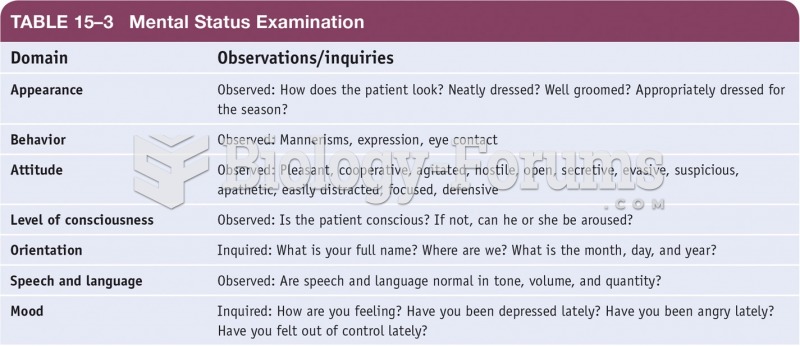Answer to Question 1
ANSWER:
The most significant physical change in midlife for women is the end of their ability to reproduce. Menopause is the point where menstruation stops. For most women, menopause is complete in their early 50s, but loss of fertility is a very gradual process beginning many years earlier. Menstrual cycles may become irregular in a womans 40s as her sex hormone levels that regulate the cycles begin to drop. During the period of transition between the start of irregular periods and the final disappearance of menstruation, women can experience a number of physical and psychological symptoms. Hot flashes, night sweats, headaches, joint pain, mood swings, and sleep disturbances are common complaints, and the severity of these issues can range from barely noticeable to nearly disabling. Hormone treatments to offset these symptoms are used quite cautiously, as they can also increase a womans risk of stroke, heart attack, breast cancer, and later dementia.
Men experience much more gradual changes in their reproductive status through the remainder of their lives. Sperm quantity may be reduced, but men in their 80s remain half as fertile as men who are 25. Most men experience little if any decreases in testosterone over the course of the midlife years, although other conditions, such as diabetes, can interfere with the maintenance of an active sex life. For both men and women in midlife, the availability of a partner is much more predictive of sexual activity than any health issues.
Answer to Question 2
ANSWER:
Adolescence is a period of development beginning at puberty and ending at young adulthood. Puberty is a period of physical changes leading to sexual maturity. Adolescence is an artificial, arbitrary period of development that is a relatively recent phenomenon in human experience. In huntergatherer societies, sexual maturity at puberty signaled the young persons entry into adult roles, privileges, and expectations. Our word puberty comes from the Latin word for adult.
Although adolescence is assumed to begin with puberty, we do not have much consensus regarding its endpoint. Legally, an 18 year old is an adult in the United States. However, we restrict legal alcohol consumption to those over 21, and rental car companies rarely rent cars to young adults under the age of 25. Lifestyle factors associated with adulthood, such as financial independence from parents, separate living arrangements, marriage, and parenthood, are far more descriptive of the end of adolescence than age.
Two factors have resulted in an extended period of adolescence in modern, industrial societies, such that it starts earlier and ends later than in the past. One is the dramatic decrease in the age at which puberty occurs. Over the last 100 years, the average age of puberty in the United States has dropped from about age 16 to around age 12. For people living 100 years ago, taking on adult roles around the age of puberty was much more realistic than it would be today. Recent evidence shows that this trend is ongoing. We do not know exactly why puberty is occurring earlier. A second factor contributing to the length of modern adolescence is the extended period of education and training needed in technological societies. Youth at puberty are simply not prepared to assume adult roles in most modern cultures.







